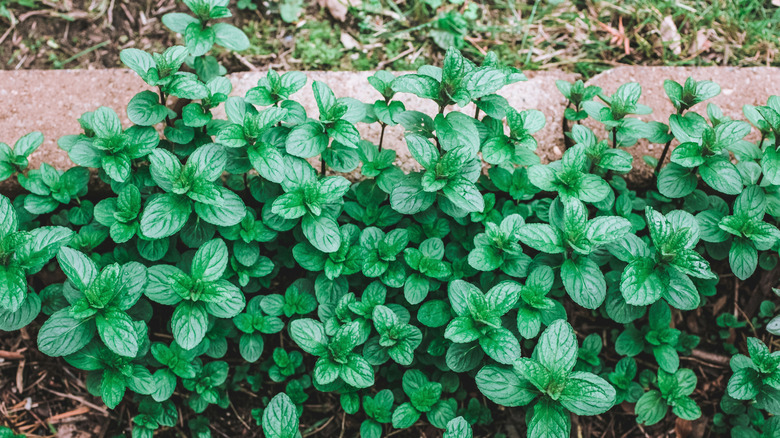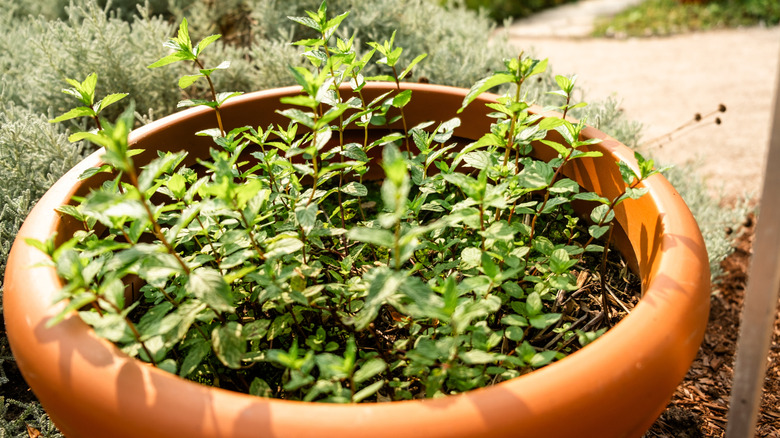The Downsides To Growing Mint That You Should Be Aware Of
Common mint (Mentha sp.) is one of the easiest herbs to grow and has so many different uses in the kitchen. But before you rush out to plant some seedlings, there are certain downsides to growing mint in your yard that you should really be aware of. Primarily, as mint is quite an aggressive grower, it can quickly take over your yard, and efforts you may make to curb the spread will be entirely futile. Your visions of a neat herb garden could in reality become a sprawling mess thanks to the tiny seedling of mint you planted without realizing what would happen.
Over a short period of time, your mint plant can spread and scramble over any plant that might be in its way. Not only that, but it certainly won't behave itself enough to stay confined to its garden bed. Before you know it, the mint will be everywhere throughout your landscape, invading all your flower beds and suffocating any small plants that aren't aggressive enough to fight for their survival. While this might be painting an extreme picture, it is a possibility that you should think about. You also need to be aware that some species of mint, primarily spearmint (Mentha spicata), are considered invasive and shouldn't be planted in your yard. As an alternative, you can bring beneficial bugs to your garden with one type of garden mint that's not invasive, known as mountain mint.
Why mint can be such a problem if planted in the garden
In essence, mint is a very hardy plant. It can survive in full sun but does equally as well in shady spots that only receive around three hours of sunlight daily. It will also grow in most soils, except for those that are excessively dry. This ability to thrive in a wide range of conditions is just one of the reasons mint can be such a problem in the garden. But more troublesome is the way this herb spreads. The plant sends out underground rhizomes that can quickly work through the soil and send up growth shoots along the way. The only way to actually control the spread is by using physical barriers that the rhizomes simply can't break through. Even after you try and pull it out, if you've left any small pieces of root in the soil, they'll happily sprout new growth.
This is why the best place to plant mint is in a container, even if this is placed or submerged into the ground in your herb garden. Limiting the spread of the roots is what you want to achieve if you don't want this highly aromatic perennial to invade the rest of your yard. There are even varieties of mint that are considered less aggressive in their growth that you might want to try. Varieties of mint that won't try to overrun your garden include pineapple mint, banana mint, and apple mint.

